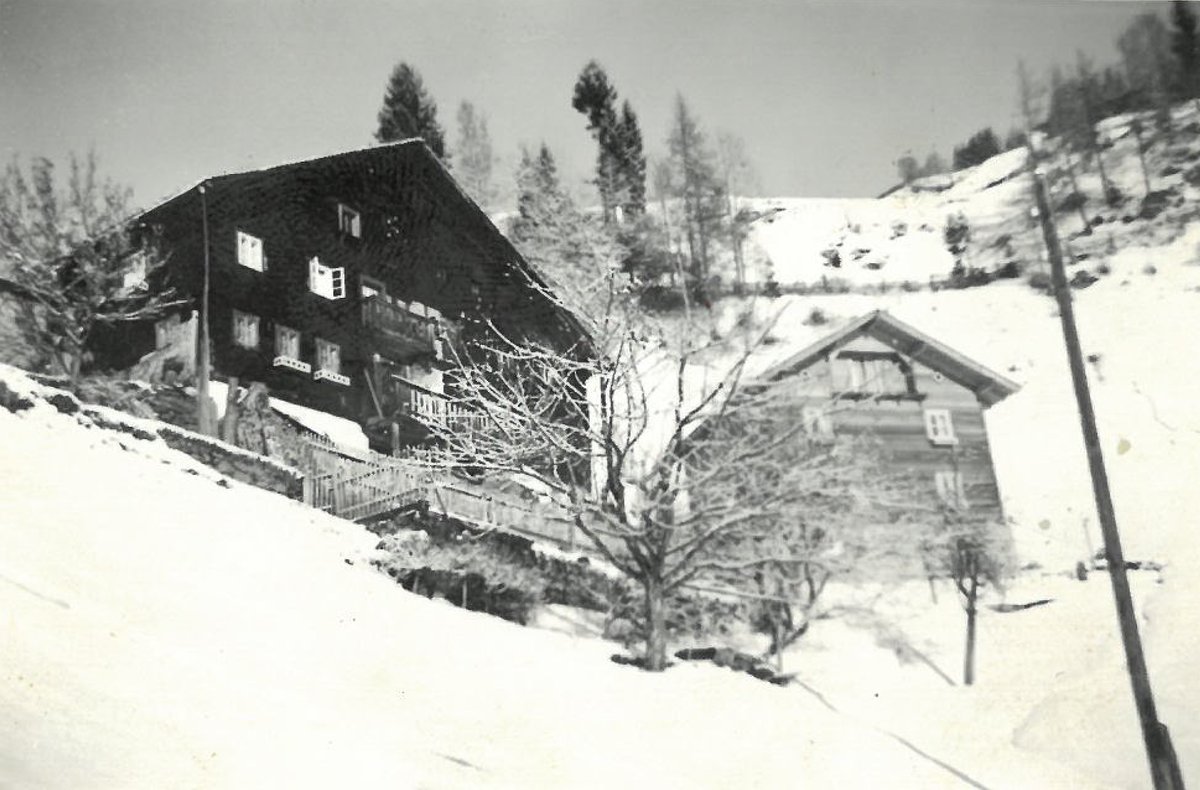
Family That´s where we come from: Great Grandma Ida
That´s where we come from: Great Grandma Ida

Gabriela Kirschner
Manager & Herbal Specialist

How everything began
Ida Sieß was born on May 14, 1927 in Grins in the Stanzer Valley. The birth was soon overshadowed, because her mother died about two months after the birth of the twins Ida and Karl. She was never supposed to get to know them. As a result of this stroke of fate, the father was left alone with six children - including two newborns who had to be looked after. At the age of five, Ida was already entrusted to Vollweise and the care of Base Regina. A hard, barren childhood, like so many in the mountain farming villages. After elementary school she finished school and she worked in textiles in the spinning and weaving mill in Landeck.
From orphan to wife and mother
How Ida Sieß met Ferdinand Siegele from Langesthei is not known, he worked in road construction and the timber industry in Grins, and they probably met at a home evening. The fact was that Ferdinand, who was three years older than her, was orphaned with his six siblings when he was 12 years old. A hard time, they got a guardian and worked hard to get enough food, for a few new shoes it was a week to go into the woods. On November 5th, 1956, he took the 29-year-old home to Langesthei as his wife. On foot, of course. The long distance (now 18.5 km opened up) was covered over high valley paths. What luggage did Ida bring into her new life and whether there was a small, hand-made trousseau in it? We would like to ask her these and other questions today. In any case, there was no road leading to Langesthei, which was only built decades later. A handful of residents lived in the remote village - even today there are not many more than 200.

Great Grandma Ida

Great Grandpa Ferdinand
Everyday life in mountain farmers
Her simple everyday life began in Langesthei with husband Ferdinand. The two lived in an old farmhouse, gradually kept cows, pigs and chickens and led the busy life that was typical of the mountainous valley of their time. There was no water connection in the house, Ida washed the laundry at the well. Life was often difficult in several ways. In the winters the ice flowers bloomed on the living room window, on Saturdays they bathed in the "Schaffel". Ferdinand worked alongside agriculture in road construction. So the family found an easy living. For the time, Ida became a late mother. At 33 she had her first child, three more followed every two years. After all, Ferdinand and Ida had two sons and two daughters of their own. One of them was Gabriela. The two daughters slept in their parents' room, the brothers shared the other. Tackling and working was on the agenda from the start. In particular, it meant dragging, dragging, dragging. In the steep terrain, all loads - from hay to potatoes - were carried in a basket on the back. One worked exclusively by hand and without machines. The work on steep terrain was made easier with the help of winches. So the family defied the mountain with hard work what was needed to live. What is called free time today is most likely to take place on Sunday. Relatives were visited and invited. There was of course no money for a visit to the inn. Just as little as for any other luxury. At Christmas, the godmother offered a doll for the two daughters in addition to the mandarins and nuts. However, she already lost her head on Christmas Eve due to outside influences.
Mobility - need others
Ida and Ferdinand remained without a driver's license all their lives. That is why the first car ownership of a neighbor caused a certain sensation in the village. He owned an NSU and coined the statement: "The NSU will leave in no time." That was only true after the car owner had walked for an hour. As mentioned, there was no road leading to the village and only the march brought him to his "Tuifl on four wheels". The sons learned to ride a bike on the meadow path and later to ride a moped. Ida and Ferdinand did without a car all their lives - they had settled in a modest life. Despite the narrowness of the valley, the two were surprisingly cosmopolitan and were happy when the daughters introduced their friends. The fact that she lost one of her daughters at the age of twenty and under tragic circumstances was a big blow. Ida and Ferdinand witnessed the opening of the Hiasl-Stubn, but unfortunately not the hotel building. Grandma Ida would be amazed when she saw what has become of it and the family. On March 28, 1991 she died at the age of 64 after a busy life on Maundy Thursday in church. Three years later, her husband, Ferdinand, followed at the age of 69.
We hold them both in honor and are grateful that they have given our works wings in their own way.

Grandma Ida and Grandpa Ferdinand lived in this farmhouse in Langesthei with their 4 children - one of them was Gabriela :)


